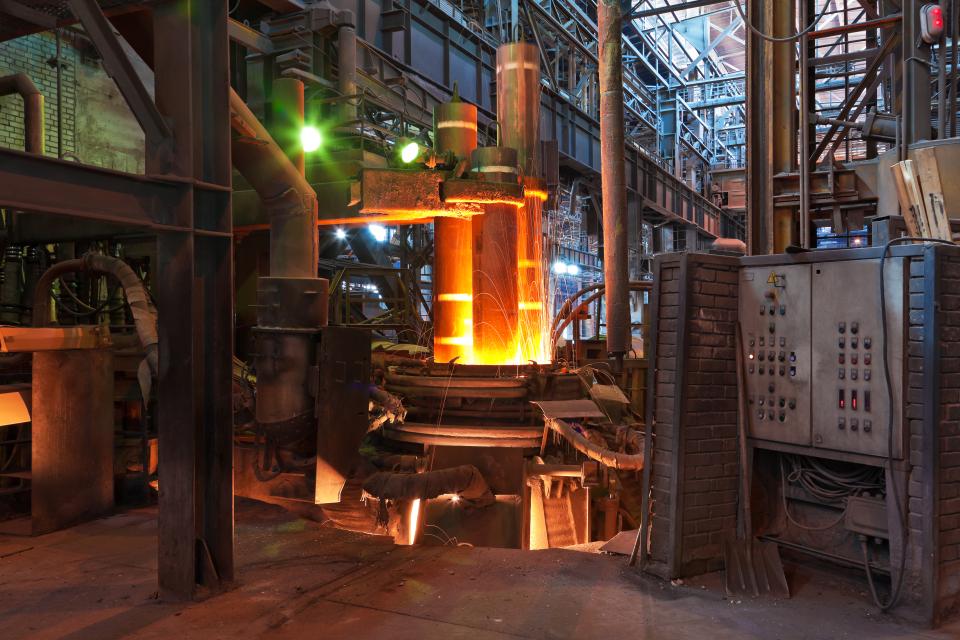Following Tata Steel UK's proposal to invest in Electric Arc Furnace-based steelmaking for its flat products business in Port Talbot, steel sector trade body UK Steel has published an overview of the progress being made, globally, in extending product ranges using the technology.
In the UK, existing EAF producers are already producing highly specialised steel for aerospace and defence applications, and universities such as Swansea University are researching scrap sorting techniques, which will increase production range capabilities.
Electric arc furnaces were previously limited in producing all steel grades and product ranges, as residual scrap elements such as copper and nitrogen can have a detrimental effect on the steel product.
However, recent innovations have shown that EAFs can produce a vast range of steel products, even some previously only produced by integrated blast furnaces, by managing the raw material mix (i.e. high-quality scrap, mixed with ore-metallics where necessary).
Therefore, the transition to EAF steelmaking is not expected to limit the UK steel industry's capabilities.
Past challenges
While existing UK Electric Arc Furnace (EAF) producers make highly specialised steel, producing all steel ranges via EAFs has historically been challenging due to the quality of steel scrap supply. When segregated from other materials, the steel scrap can be combined with other elements, with unwanted effects on the steel product, such as reducing fracture toughness, increasing strength, or creating issues with formability. Some grades have tight limitations on residual elements, which has previously prevented these from being produced with EAFs. In the past, this has been an issue for certain flat products, which require a high degree of formability.
Solutions
Steelmakers are overcoming these challenges through technological advances and mixing different amounts of pig iron or Direct Reduced Iron into the EAF melt to dilute the residuals from the steel scrap and significantly increase product ranges. Furthermore, tight control of the scrap supply and improved technology in scrap sorting have also demonstrated the ability to prevent undesirable elements from entering the EAF feedstock.
The greatly improved capability of EAF production has spurred European and North American steelmakers to invest in and switch to EAF production, as seen in Canada, France, Luxembourg, Austria, Germany, and the US.
US innovation
US steel plants, Nucor, SDI, and Big River Steel, produce flat products and use an average of over 30% orebased metallics (mainly pig iron) to control residuals, as well as only purchasing high-quality steel scrap (for example, scrap generated directly from the steelmaking process or highly sorted shredded end of life scrap).
The Big River Steel plant has invested in EAF technology only previously seen in integrated steelworks to achieve highly specialised grades. Their capabilities include producing products that cover the growing electrical steel market previously thought to be the exclusive provenance of the ore-based route by mixing scrap with orebased metallics. Investment from SDI in Texas into a thicker cast slab compared to the other mini mills to supply the local market for oil and gas pipe at heavy gauge. Nucor is developing capability to produce ultra-high strength material as the demand for these new products grows from automotive with the switch to electric vehicles.
UK experience
In the UK, for example, Liberty Steel is already producing steel for the aerospace sector via EAF, which has a very low tolerance for residual elements, through careful scrap management, and Sheffield Forgemasters produces highly specialised steel for the defence and civil nuclear sector via EAF.
R&D is also pushing what can be made in EAF. For example, Swansea University is leading a new research
programme into the latest sorting and processing technology, which will reduce non-desirable residual elements
from scrap steel.
As UK steelmakers respond to market demands for low-emission, EAF-produced steel, innovation will continue to expand what can be produced via EAF. Combined with steel producers managing residual elements by dilution with ore-based metallics for specific product ranges, as seen in the US, EAF is not expected to limit the UK steel industry's capabilities.

The UK steel sector:
- Produces 6Mt of crude steel a year, around 70% of the UK’s annual requirement (annual demand of 8.9Mt)
- Employs 39,800 people directly in the UK and supports a further 50,000 in supply chains
- The median steel sector salary is £39,637, 43% higher than the UK national median and 56% higher than the regional median in Wales, and Yorkshire & Humberside, where its jobs are concentrated
- Directly contributes £2.9 billion to UK GDP and supports a further £3.8 billion
- Directly contributes £4 billion to the UK’s balance of trade
- 96% of steel used in construction and infrastructure in the UK is recovered and recycled to be used again and again
For further information, contact:
Frank Aaskov, Energy & Climate Change Policy Manager, 07872 190965, faaskov@makeuk.org

































































































































































































































